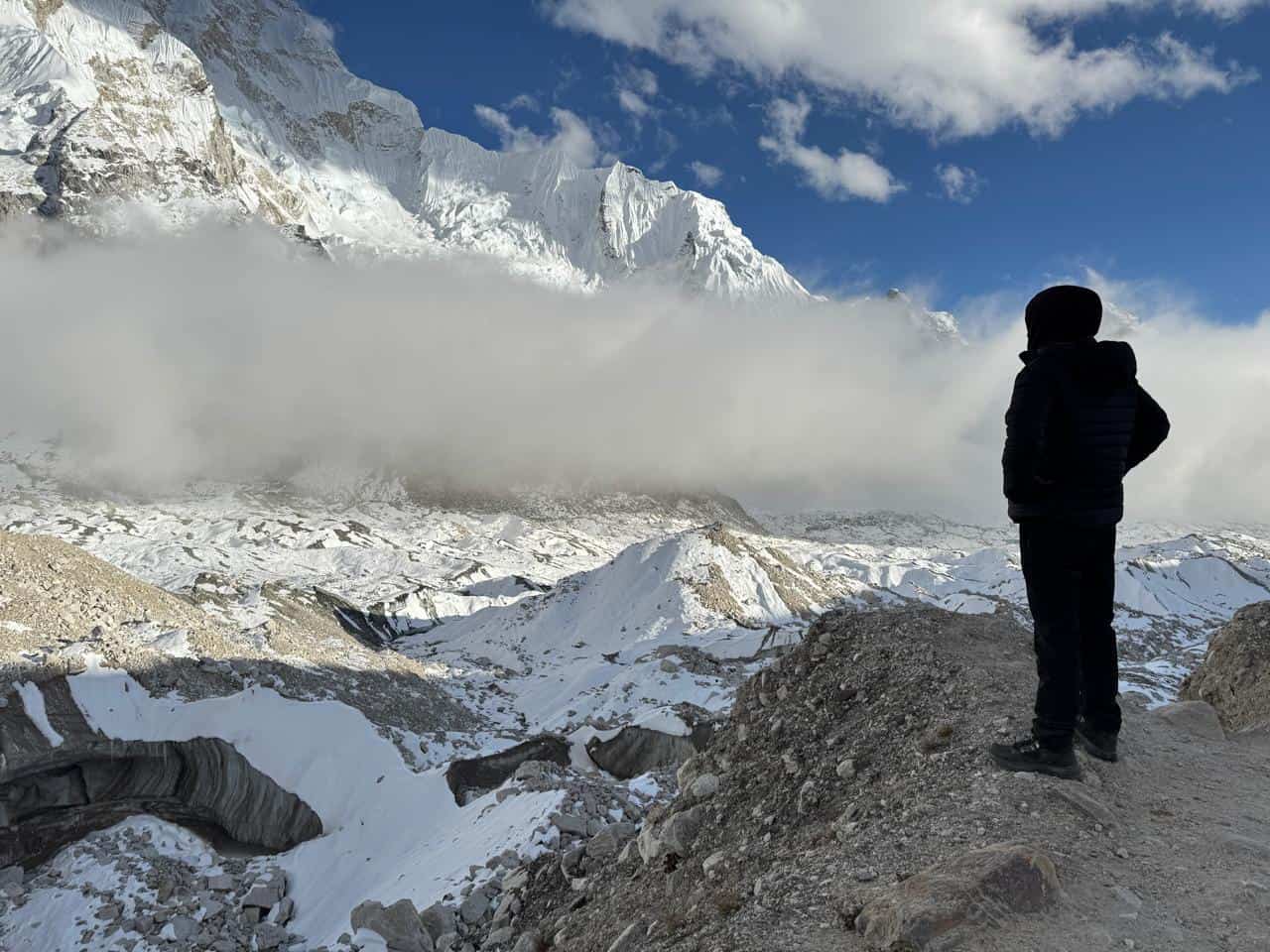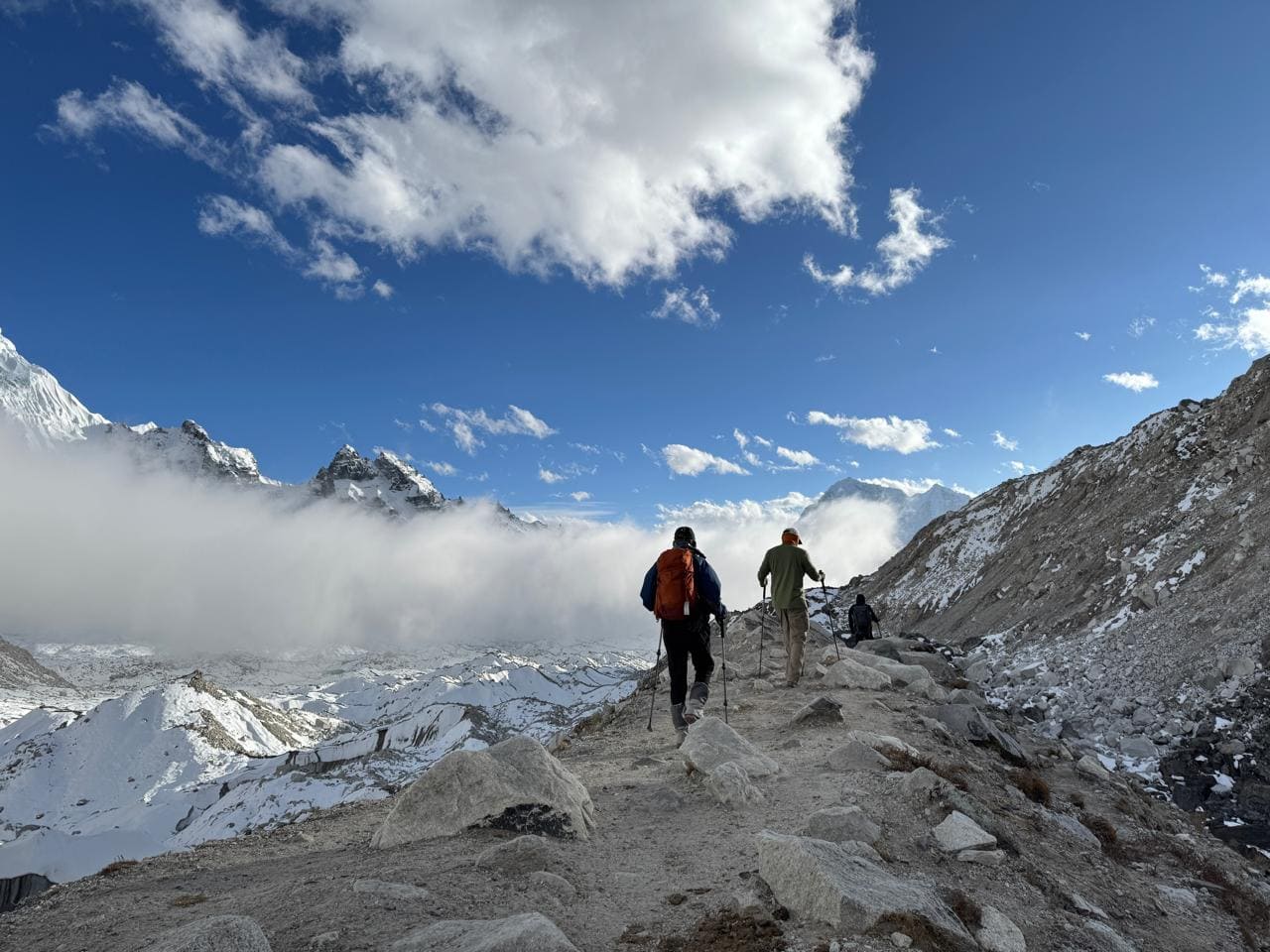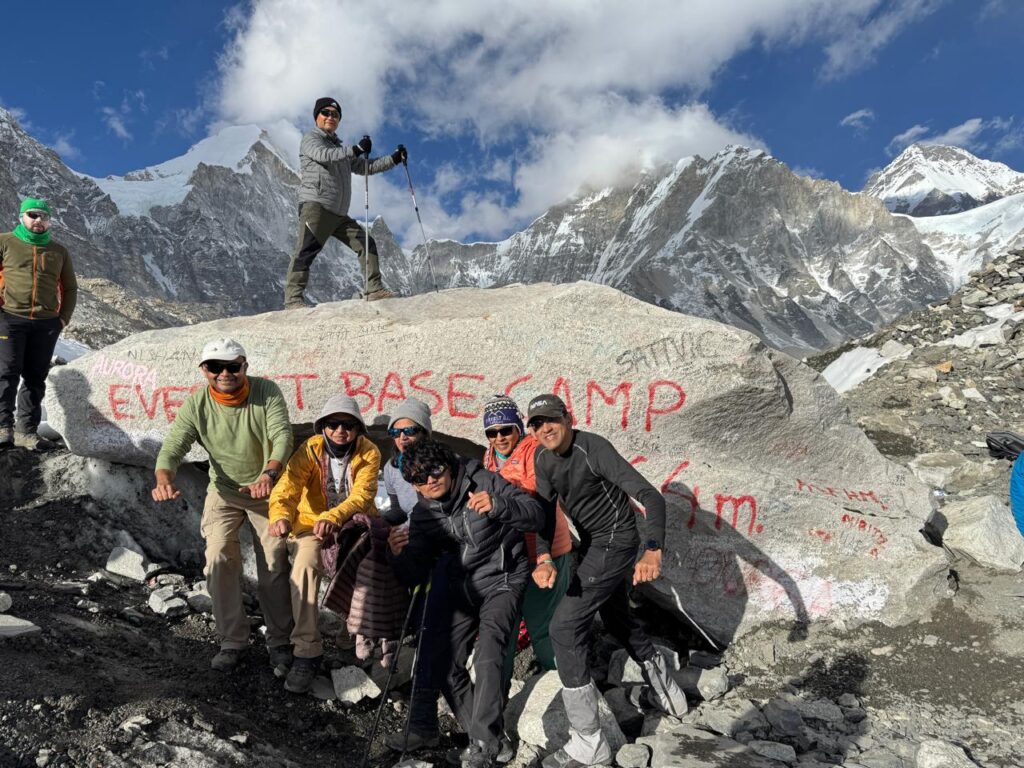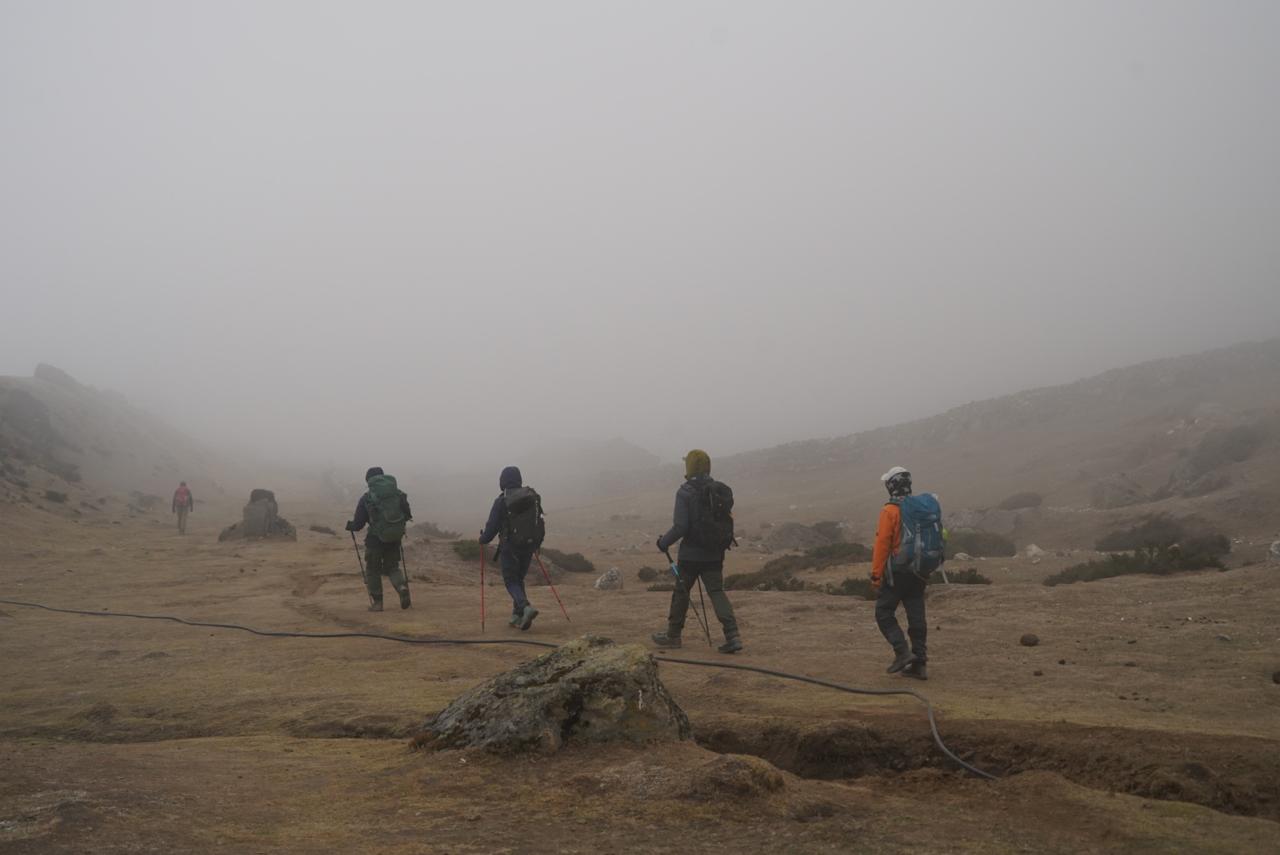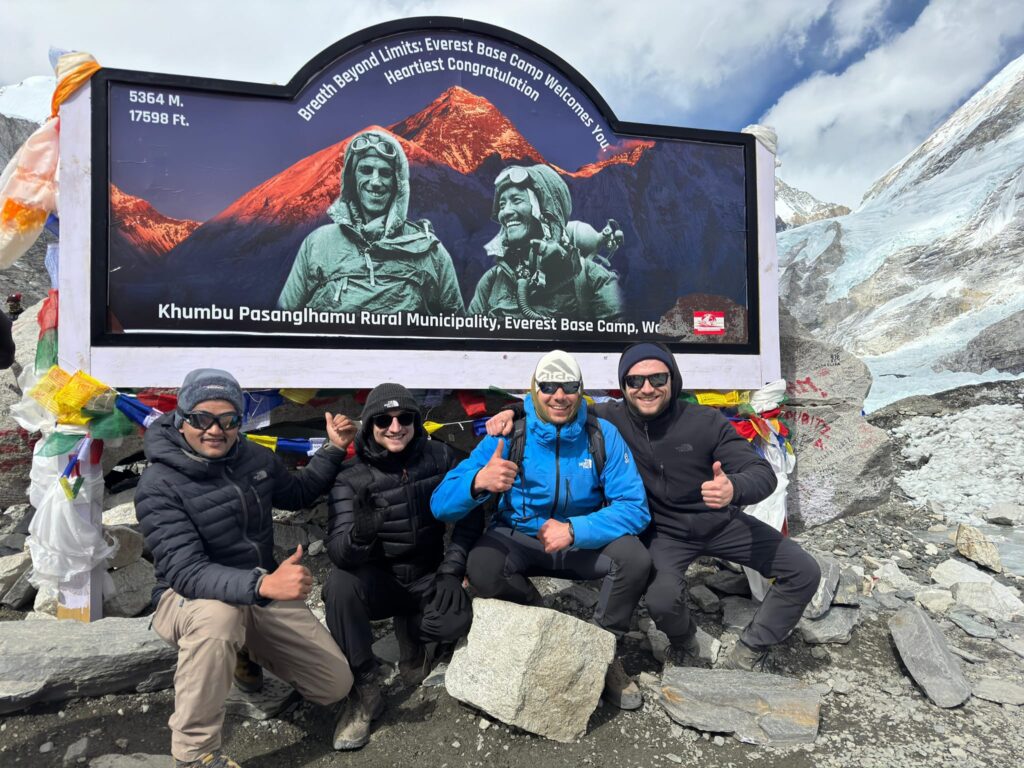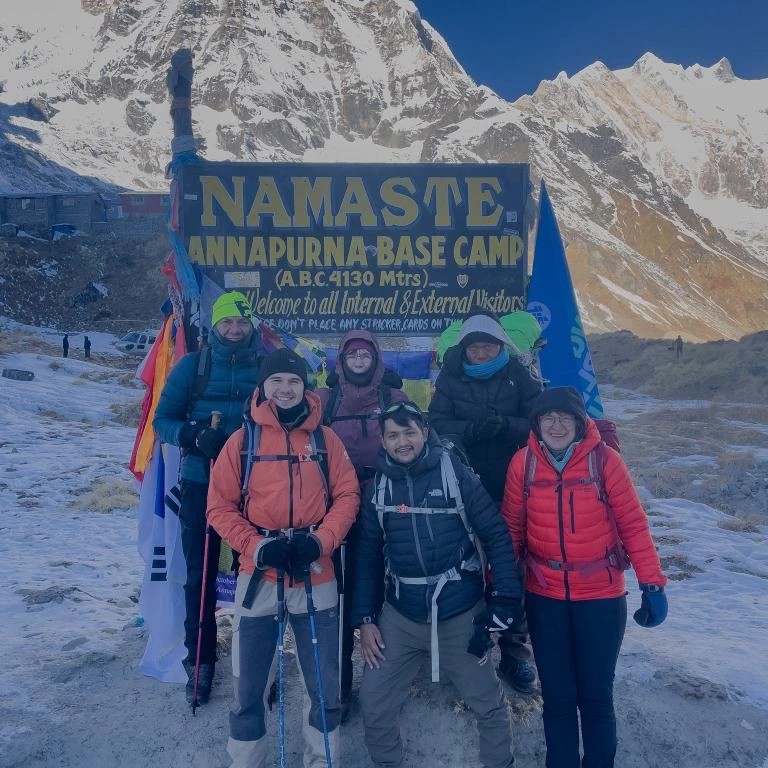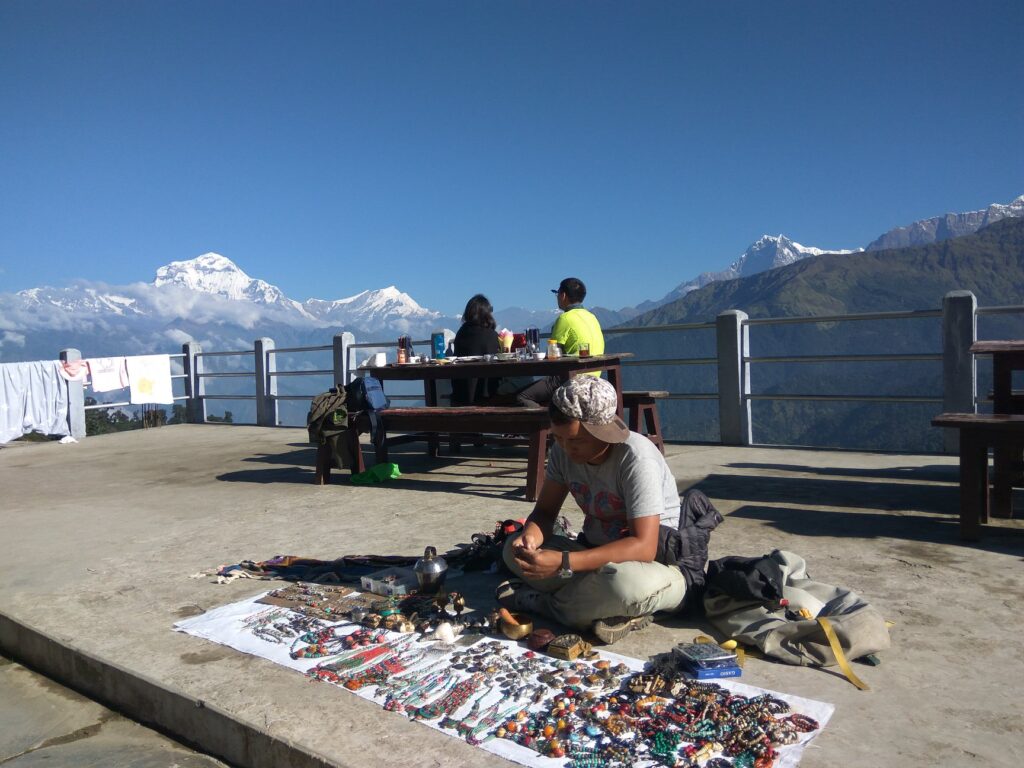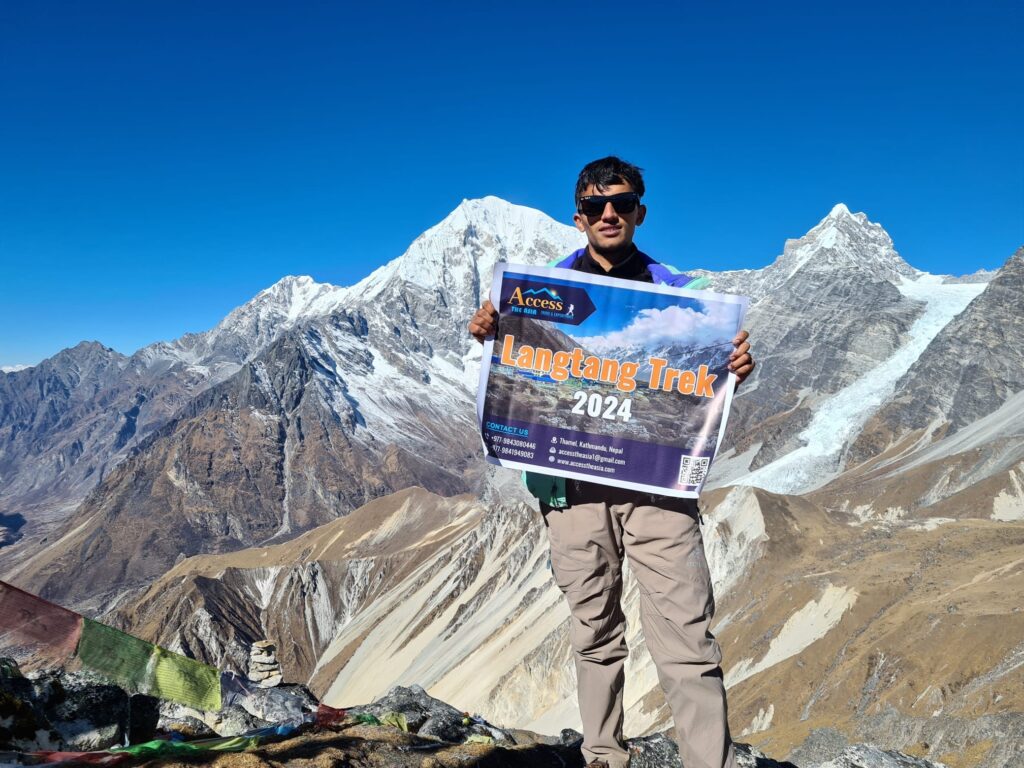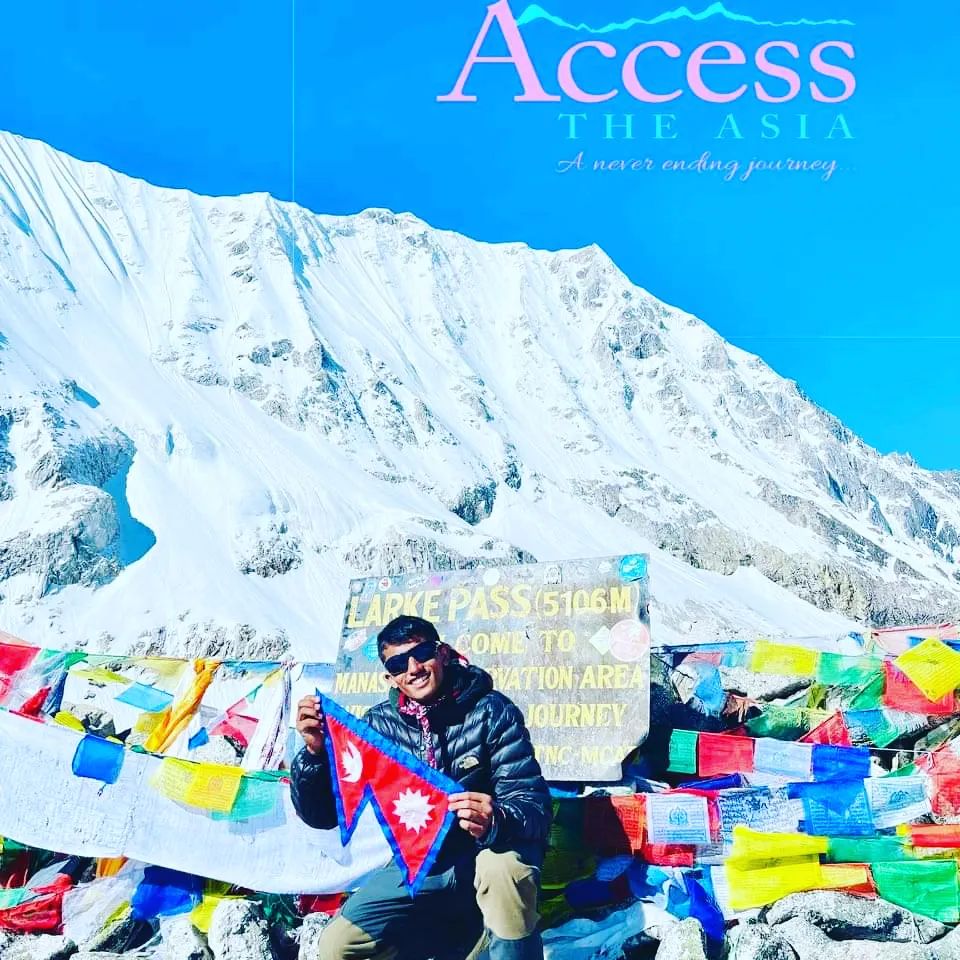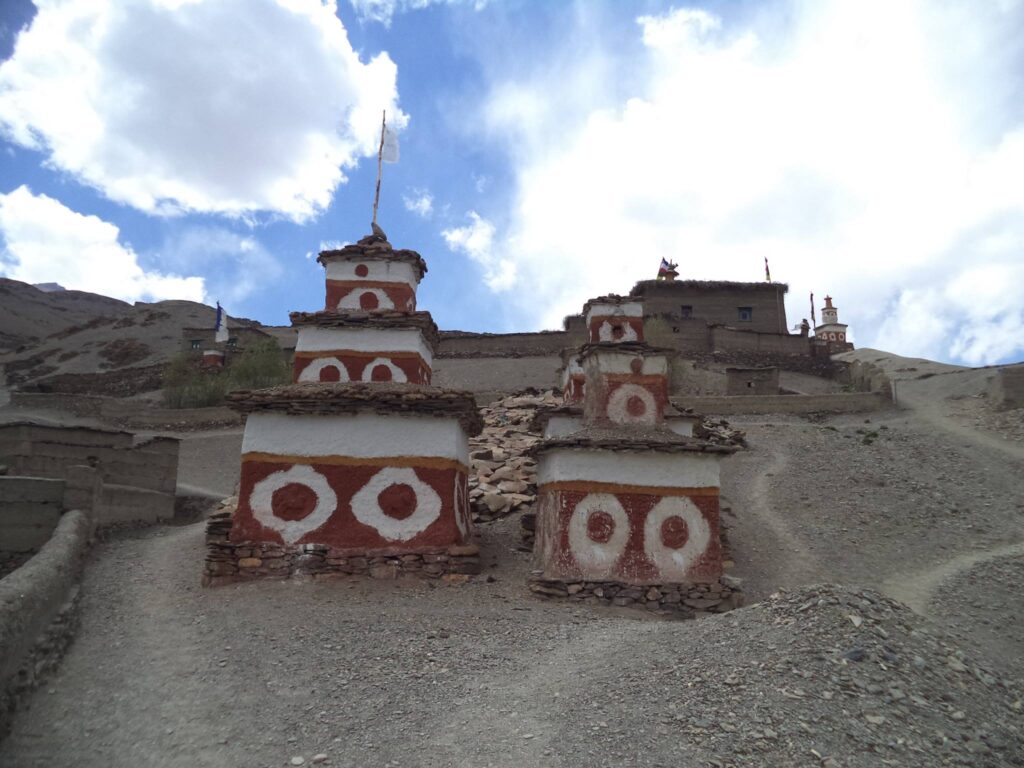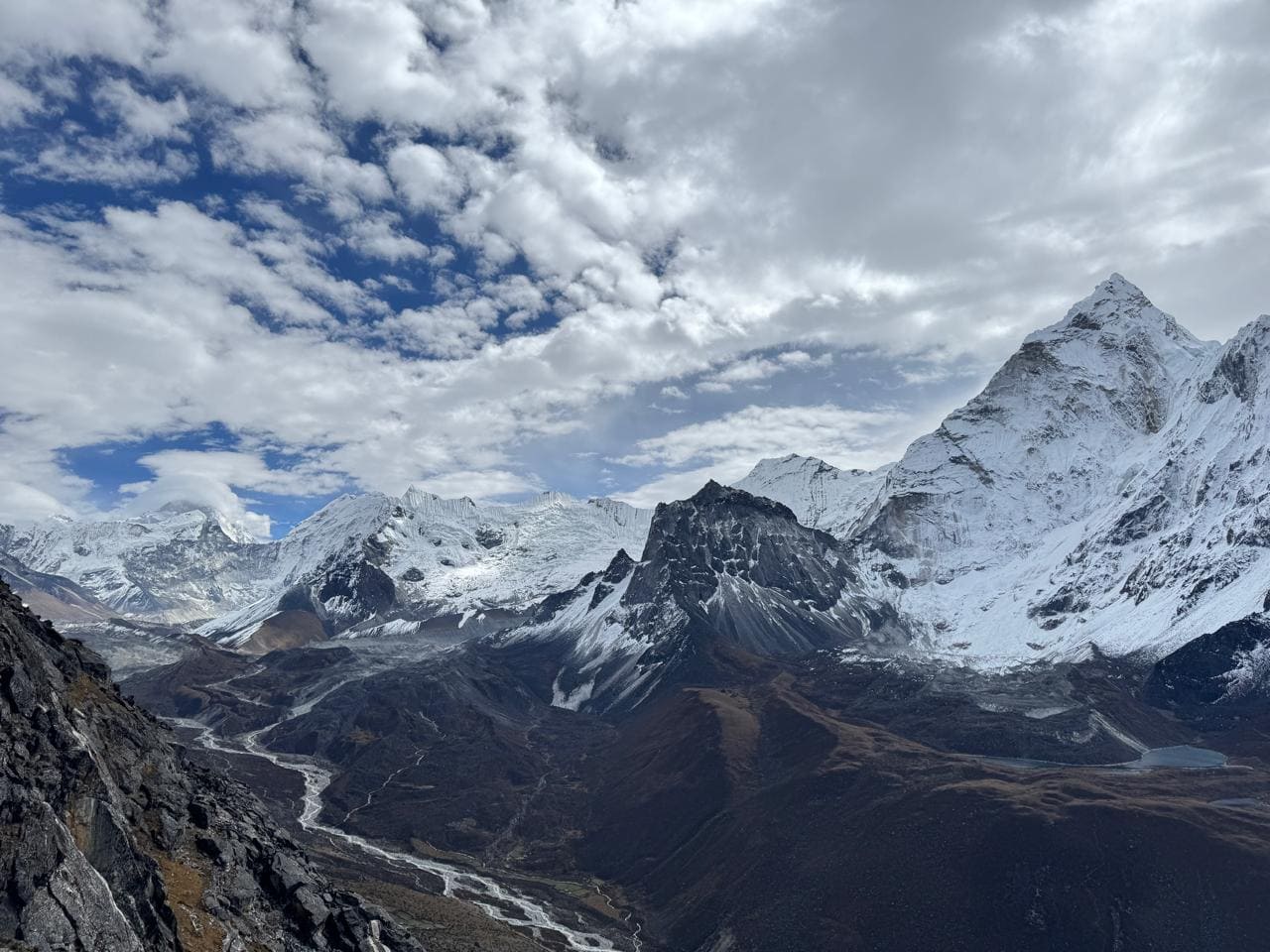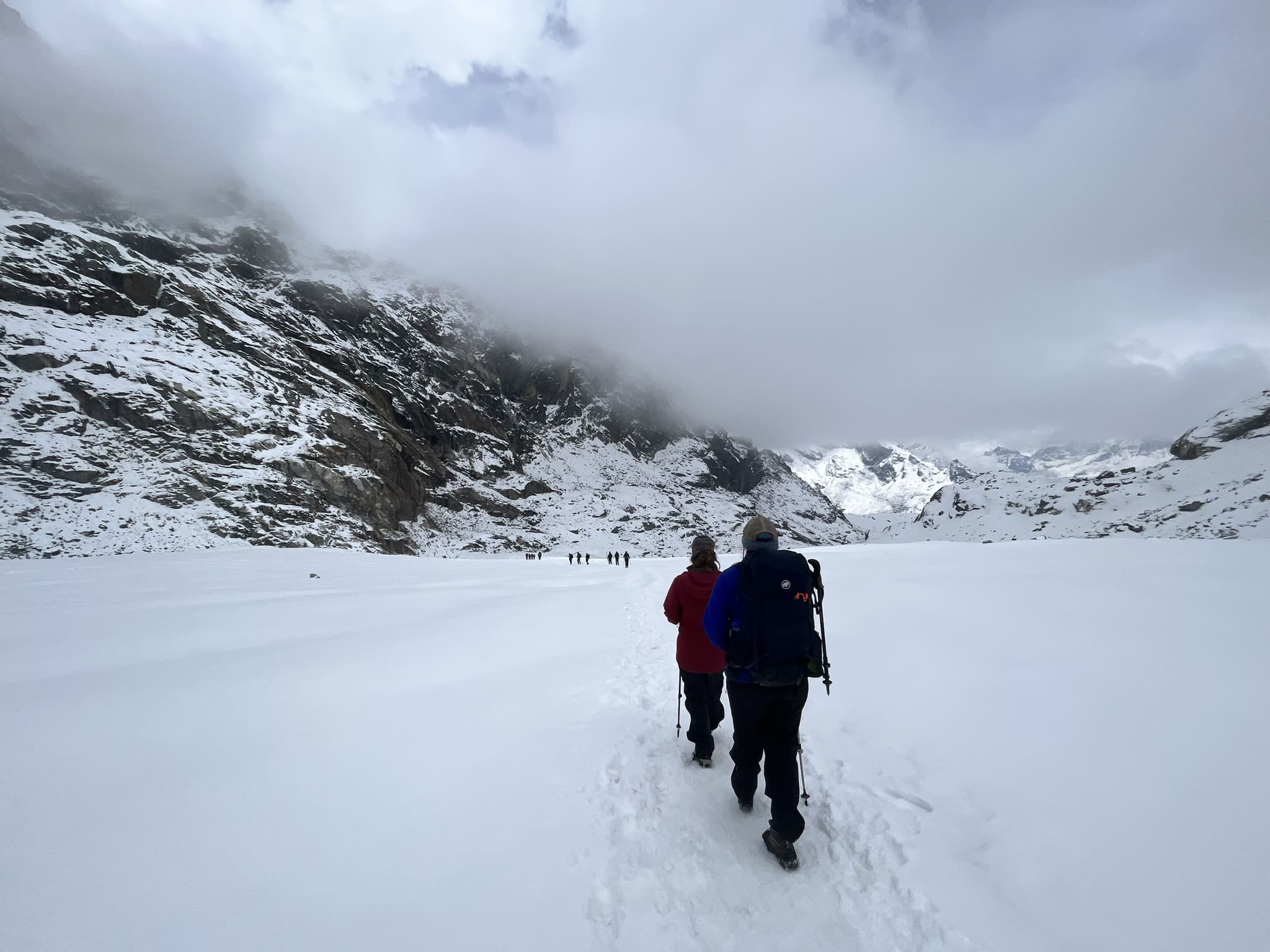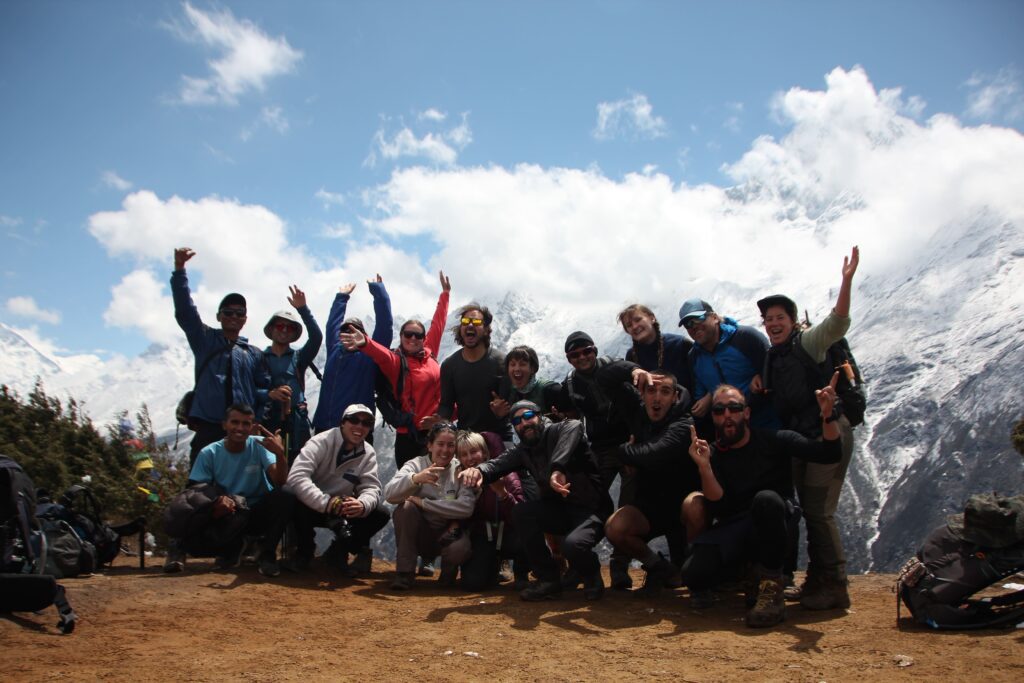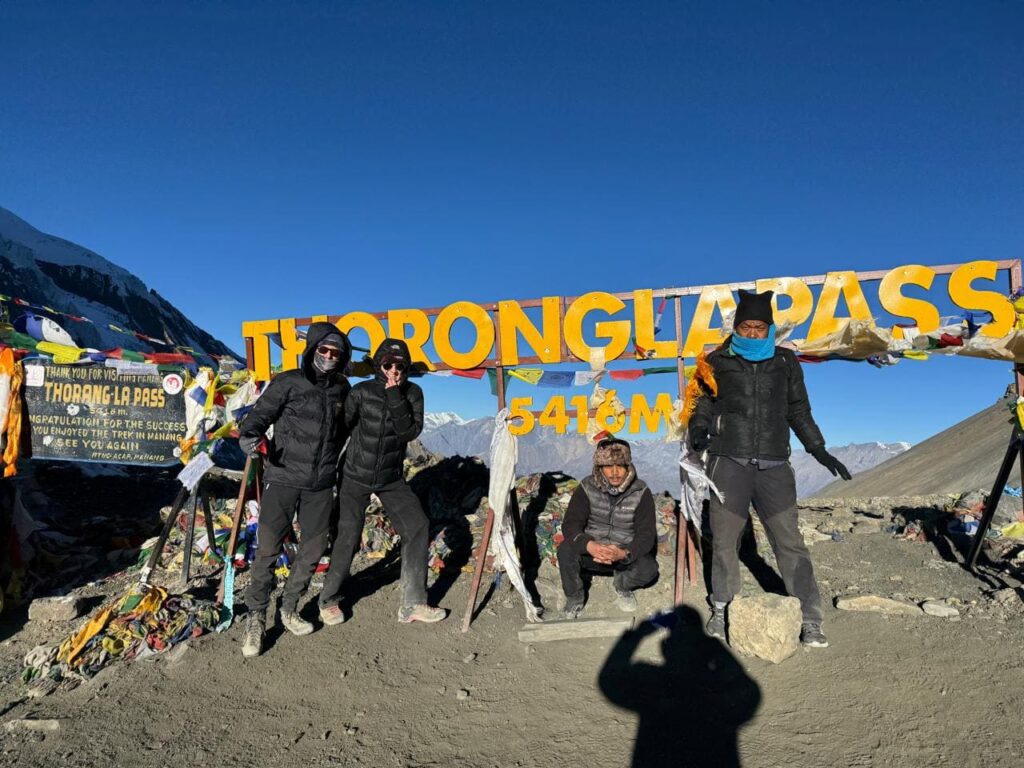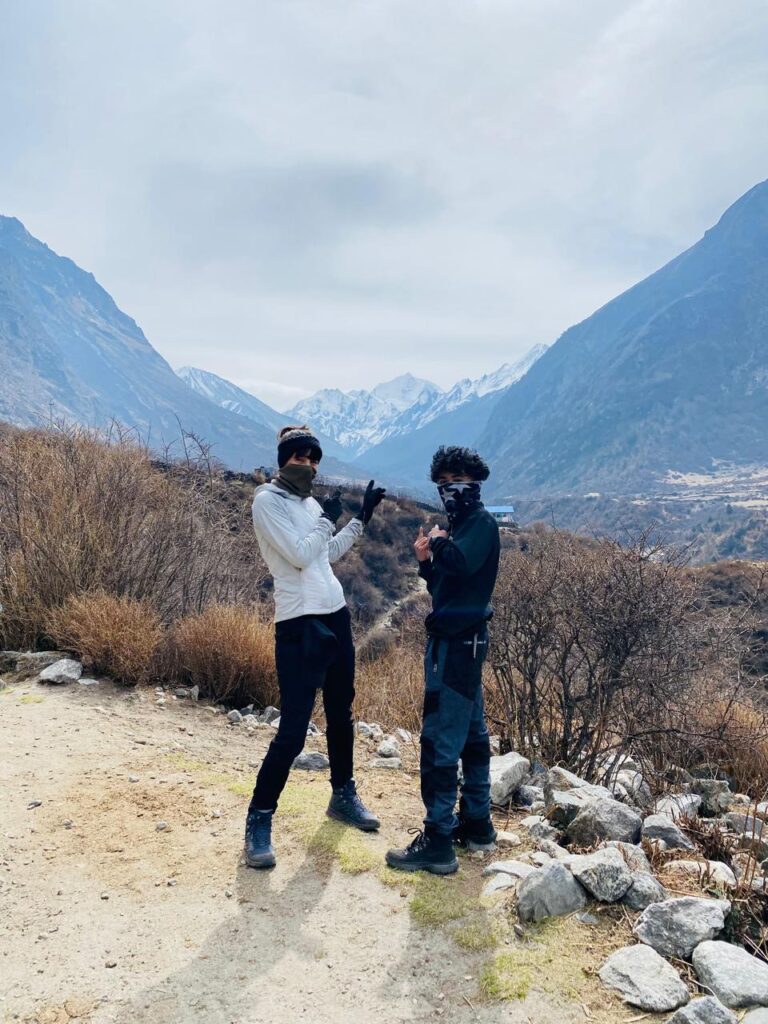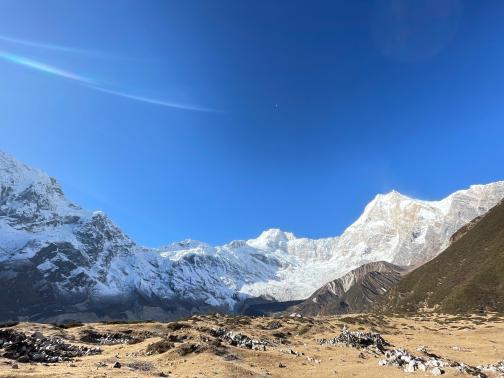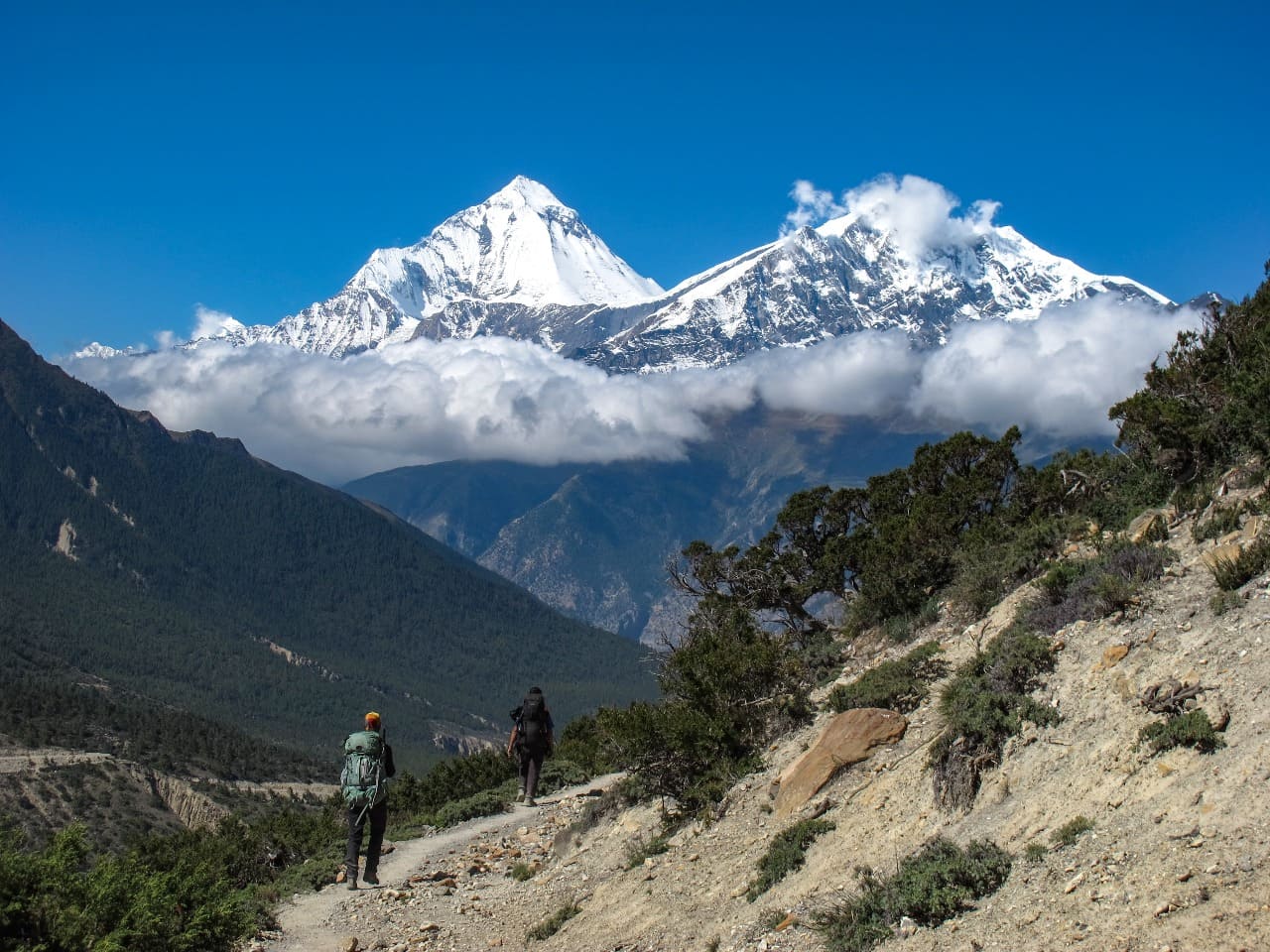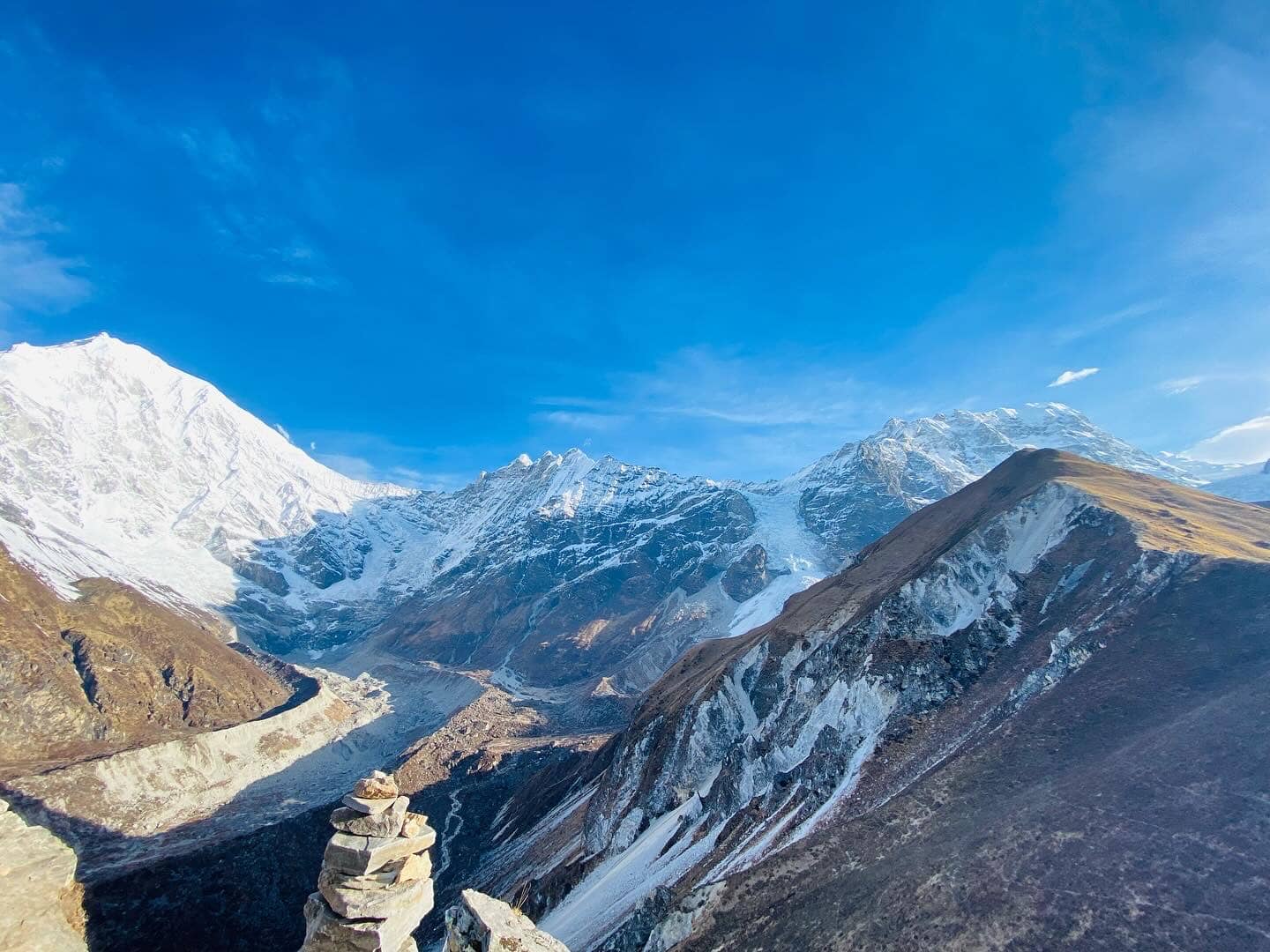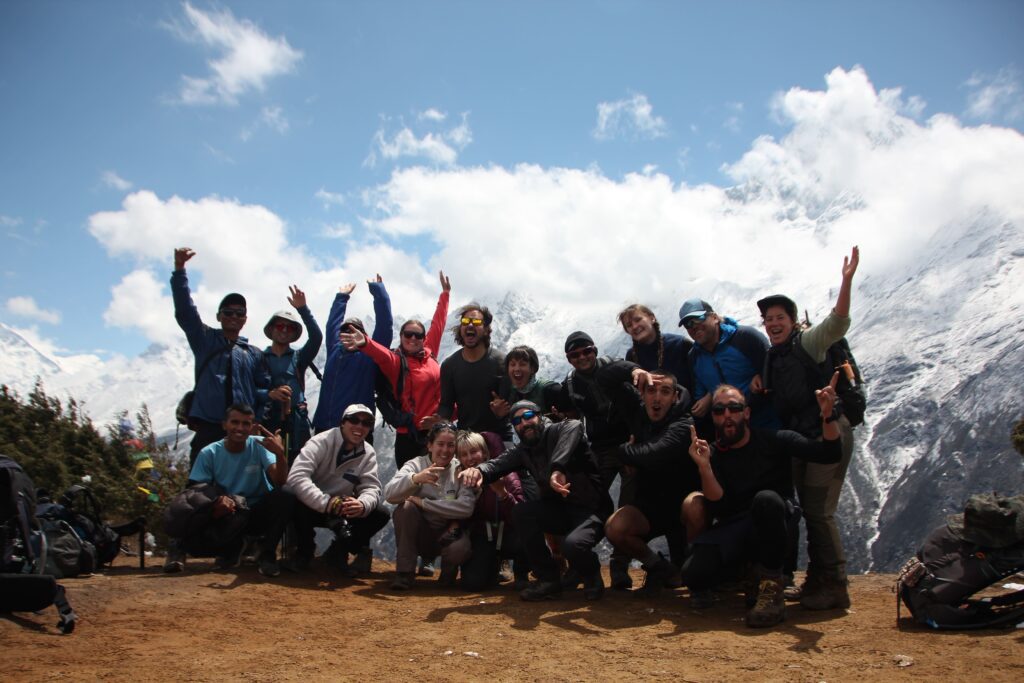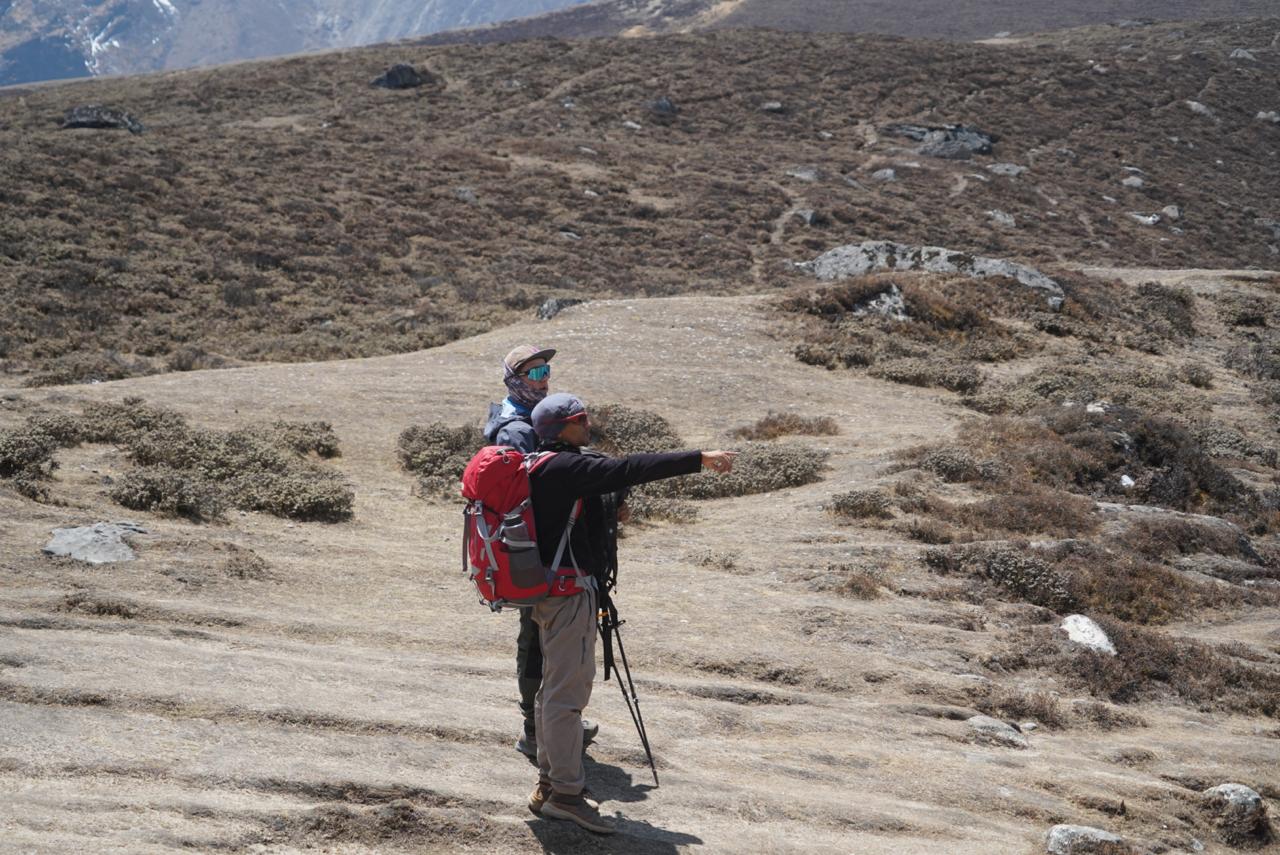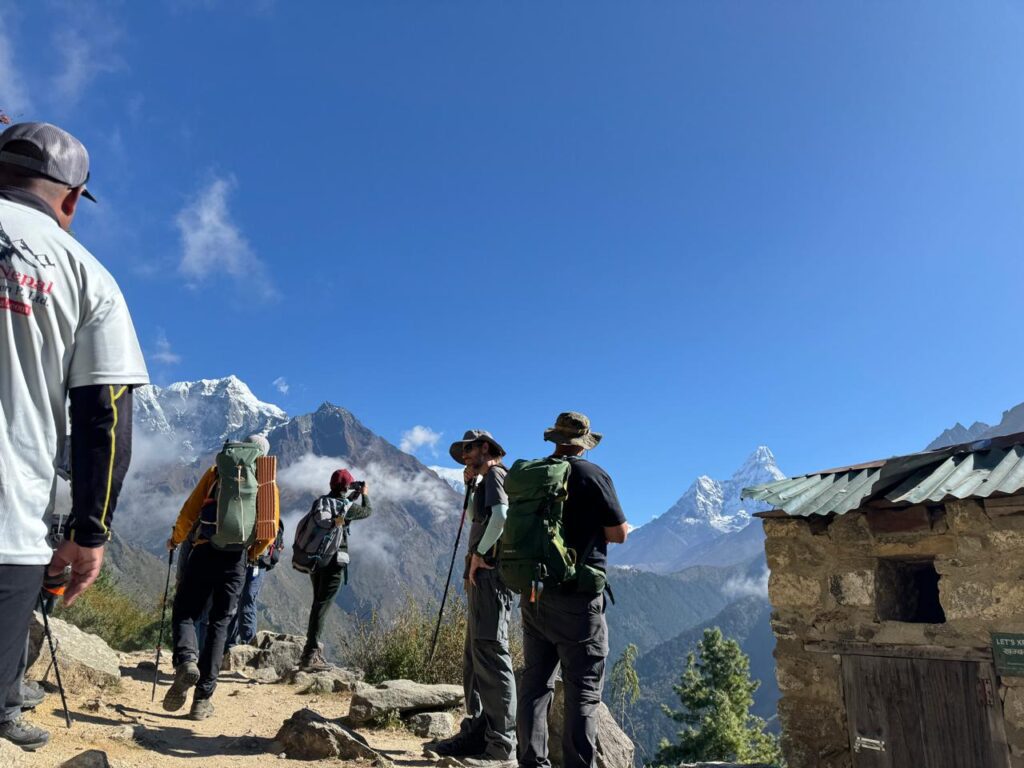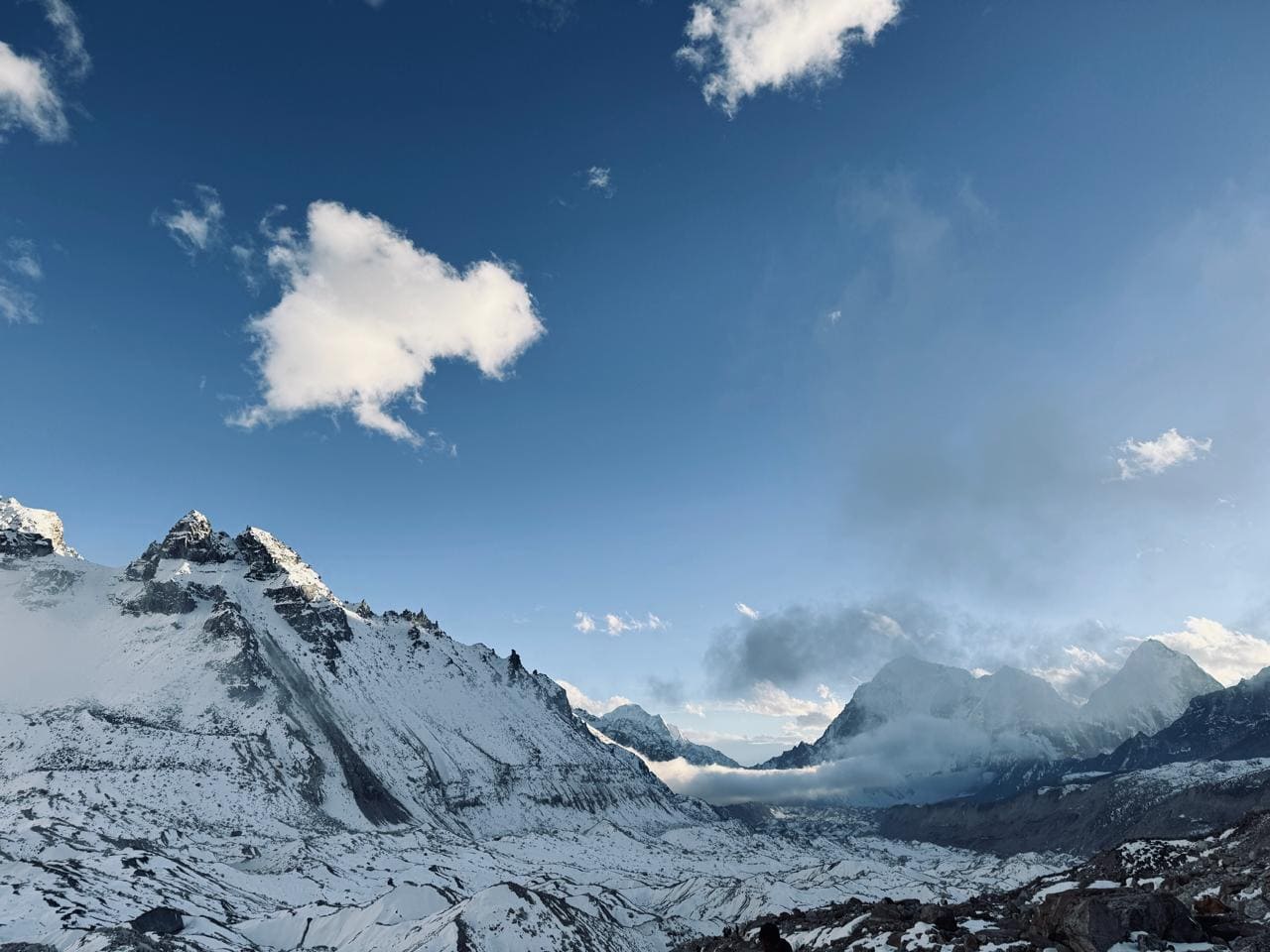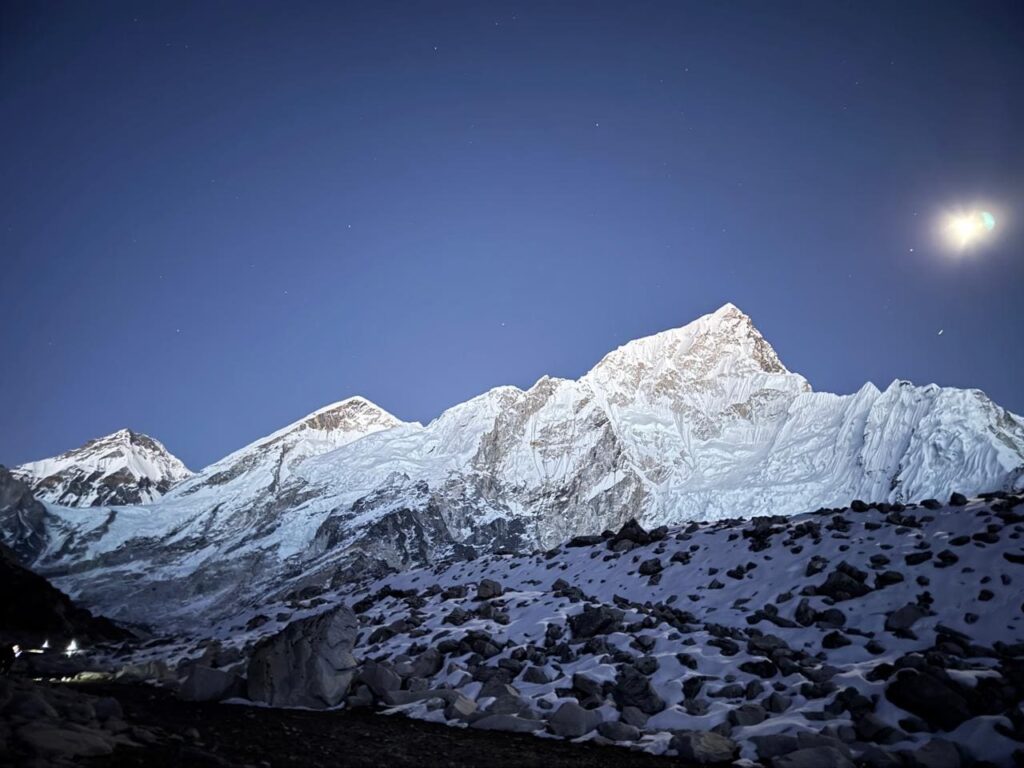So here you are; your imminent trek to Everest Base Camp (EBC) is surely filled with many questions: One of the most intriguing would perhaps be the cost! There is a huge discrepancy in prices on guided tours as compared to those who prefer going solo and even for luxury options. This cost guide for 2025 accounts for all price considerations, including some hidden ones that not many blogs mention.
📌 Quick Cost Overview (2025 Estimated)
| Expenses | Budget (USD) | Mid-Range (USD) | Luxury (USD) |
| Guided Trekkers (All-Inclusive) | 1,200−1,800 | 1,800−2,500 | $3,000+ |
| Solo Trekkers (Self-Guided) | 800−1,200 | – | – |
| Flights (Kathmandu-Lukla) | 350−500 | – | – |
| Permits fees (TIMS + Sagarmatha NP) | 50−100 | – | – |
| Foods & Tea Houses | 20−40/day | 40−70 per day | $100+ per day |
| Rented Gears | 50−150 | – | – |
| Tips (Guides & Porters) | 200−300 | – | – |
| Travel Insurances | 200−300 | – | – |
💡 Total Estimated Cost (2025):
- Budget: 1,200−1,800
- Mid-Range: 1,800−2,500
- Luxury: $3,000+

✈️ 1. Flights to Nepal and to Lukla
Kathmandu to Lukla Flight Costs (2025)
- Round trip: 350USD−500USD (price depends on season)
- Best time to book your trip? October to November (In peak season price gets higher).
- Alternative? Helicopter (500USD−1,000USD) if flights are canceled.
⚠️ Hidden Costs: Dealays can happen due to sudden weather change in Lukla so you can add extra 30USD to 50USD for hotels there.
🛂 2. Trekking Permits (Compulsory Fees)
You cannot trek to Everest Base Camp without there permits:
Sagarmatha National Park Entry Permit → 30USD
- TIMS Card (Trekker’s Information Management System) → 20USD
- Local Government Fees (Khumbu Pasang Lhamu) → 20USD
💡 Total Permit Cost: 70USD per person
🏠 3. Accommodation (Teahouse/Lodges Costs)
- Budget: 5USD−10USD per night (basic room and shared bathroom)
- Mid-Range: 15USD−30USD per night (attached bathroom and better heating during Everest Base camp trek)
- Luxury: 100+USD per night
⚠️ Hidden Cost: Some of the teahouses requires you to eat dinner there if you stay overnight.
🍛 4. Foods and Water estimated Costs
- Dal Bhat (Unlimited Rice): 5USD−8USD
- Western Meals like (Pizza, Pasta): 8USD−15USD
- Hot Drinks like (Tea, Coffee): 2USD−5USD
- Mineral water: 2USD−4USD per liter
💡 Pro Tip: Budget 20USD−40USD per day for food if eating sensibly, 50+USD for comfort.
🥾 5. Rented Gears and Packing List
Do you have your own gears? If no then you can rent in Kathmandu mainly in Thamel that can help you during Everest Base Camp trek:
- Down Jacket: 1USD−3USD per day
- Sleeping Bag (-20°C): 2USD−5USD per day
- Trekking Poles/sticks: 1USD−2USD per day
- Backpack (50L+): 2USD−5USD per day
💡 Total Rent Costs: 50USD−150USD for 12-14 days.
👨🏫 6. Guide and Porters Costs
- Licensed Guide: 25USD−40USD per day(depends on how experienced guide you are taking)
- Porters (carries 15-20kg): 15USD−25USD per day
- Tipping: 200USD−300USD total (expected at the end. Better tip them good because their saving will depend upon your tip.)
⚠️ Hidden Cost: Some budget agencies underpay guides, book ethical companies for Everest Base Camp trek!
Note: Booking from well established company like Access The Asia treks and expeditions helps you saving more money because they will manage everything from Kathmandu and you don’t have to worry about anything during the trek.
🏥 7. Travel Insurance (Compulsory!)
- Insurance must cover: Emergency helicopter evacuation (up to $5,000+)
- Best for Everest Base Camp trek: World Nomads, SafetyWing, Young Travellers
- Cost: 100USD−300USD (depends upon your age & coverage)
💰 8. Hidden costs and Unexpected Costs
- Battery Charging/WiFi: 2USD−5USD per charge
- Hot Shower: 3USD−8USD per use
- Oxygen Meter Check: 1USD−3USD per test
- Extra Acclimatization Days: 30USD−50USD per day

📈 How to Save Money on Everest Base Camp (EBC) Trek?
✅ Book Early (always avoid peak season because price goes very high at that time).
✅ Join a Group Tour (it is cheaper than a private group).
✅ Eat Local (Dal Bhat) instead of Western food (It is very good choice for sustained energy).
✅ Rent Gear in Kathmandu (don’t overpack).
🎯 Final Conclusion: Is Everest Base Camp Worth It?
Indeed! The cost involved not less than $1,200 and not more than $3,000+ for the wonderful experience of swimming with the majestic and gentle animal. Book your tour with a reliable agency; set aside the necessary amount-and then some for contingencies.
🚀 Ready to Book?
Check out our Everest Base Camp Trek Package best for 2025 for all-inclusive packages without hidden costs!
🔹 Have Questions? You can message in Gmail, we are here to help you budget for the trek of your dreams!

